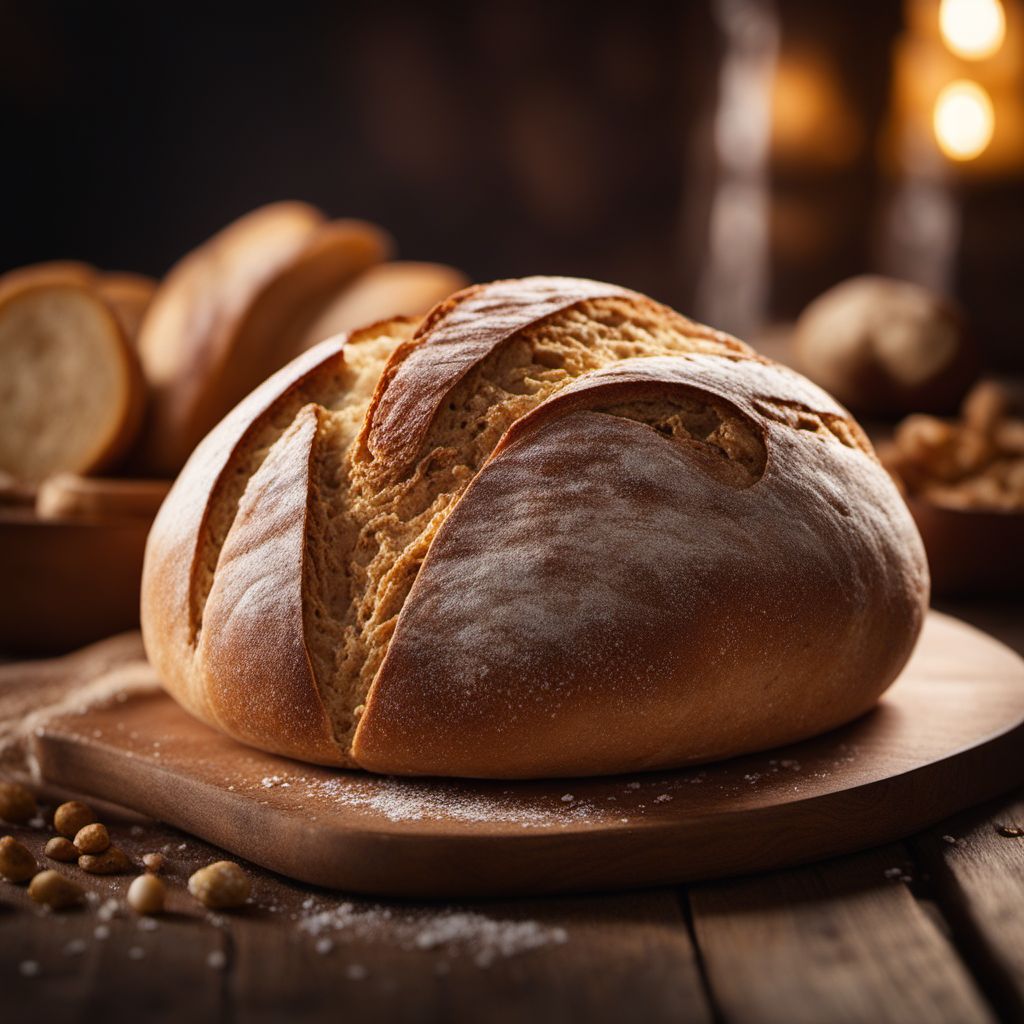
Ingredient
Sourdough starter
The Tangy Alchemy: Unleashing the Magic of Sourdough
Sourdough starter is a living mixture of flour and water that undergoes fermentation, resulting in a symbiotic culture of wild yeast and lactobacilli bacteria. This process gives the starter its distinct tangy flavor and airy texture. The appearance of a mature starter is bubbly and frothy, with a slightly sour aroma. Its texture can vary from thick and sticky to thin and pourable, depending on the hydration level.
Origins and history
Sourdough has a rich history dating back thousands of years. It is believed to have originated in ancient Egypt or Mesopotamia, where the discovery of wild yeast in the air led to the development of naturally leavened bread. Throughout history, sourdough has been a staple in many cultures, including the San Francisco sourdough culture, which gained popularity during the California Gold Rush in the 1840s.
Nutritional information
Sourdough starter is a good source of B vitamins, iron, and dietary fiber. It is also lower in gluten compared to commercially produced bread, making it easier to digest for some individuals.
Allergens
Sourdough starter may contain gluten, which can trigger allergic reactions or sensitivities in some individuals.
How to select
When selecting a sourdough starter, look for one that is active and bubbly, indicating a healthy fermentation process. It should have a pleasant sour aroma and a slightly tangy taste. Avoid starters that appear discolored or have a strong unpleasant odor.
Storage recommendations
Sourdough starter should be stored in a clean, airtight container in the refrigerator. It can be refreshed and fed with fresh flour and water weekly to maintain its vitality.
How to produce
To produce a sourdough starter, combine equal parts of flour and water in a clean container and allow it to sit at room temperature, feeding it with fresh flour and water daily until it becomes active and bubbly. This process typically takes around 7-10 days.
Preparation tips
Before using sourdough starter in a recipe, it is important to "feed" it by discarding a portion and refreshing it with equal parts of flour and water. This helps maintain the balance of yeast and bacteria. Sourdough starter can be used in a variety of bread recipes, including artisan loaves, baguettes, and even pancakes or waffles for a tangy twist.
Substitutions
N/A (Sourdough starter is a unique ingredient with no direct substitutes.)
Culinary uses
Sourdough starter is primarily used in bread-making, where it acts as a natural leavening agent. It can also be used to enhance the flavor and texture of pizza dough, pretzels, and other baked goods. Additionally, sourdough starter can be used to create tangy and fluffy pancakes or waffles.
Availability
Sourdough starter is commonly available in most grocery stores, specialty baking shops, or can be obtained from a friend who already maintains a sourdough starter.
